
TARGET 080611
How the mighty have fallen!
Golconda Fort
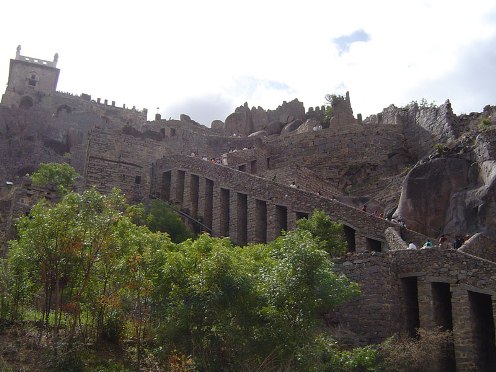
The royal family would spend the hot summers all the way at the top of the fort, where a specially designed array of ducts would swoosh the wind to constantly flow, providing cool and breezy air to take away the heat of the day. The breeze was cool and even quite strong at times.
Even more ingenious was the water supply system which flowed from the bottom up! The bottom level tanks would get filled up first and then supply water all the way to the chambers at the top of a steep hill. Simple but so effective.
The beginnings of the fort date to 1143, when the Hindu Kakatiya dynasty ruled the area. The Hindu state was later conquered by the Islamic Bahmani Sultanat. The fort became the capital of a major province in the Sultanate, and was rebuilt for defense from invading Mughals from the north.
Golconda consists of four distinct forts with a 10 km (6.21 miles)long outer wall with 87 semi circular bastions (some still mounted with cannons), eight gateways, four drawbridges and a number of royal apartments & halls, temples, mosques, magazines, stables etc, within its walls. The gates of this wall are studded with large iron spikes to prevent elephants from battering them down.
As an early-warning device, they designed a perfect acoustical system by which a hand clap sounded at the fort's main gate could be heard at the top of the citadel, situated on a 300-foot (91 m)-high granite hill almost a kilometer (over half a mile) away. Information about approaching forces, spoken from within this gate could be heard clearly by the commanders and royalty at the top of the hill.
Within the outer wall, there are two more walls, each more impenetrable than the one before it. These three concentric walls are made of granite, with crenelated rampart tops (as shown below) for maximum protection of the city.
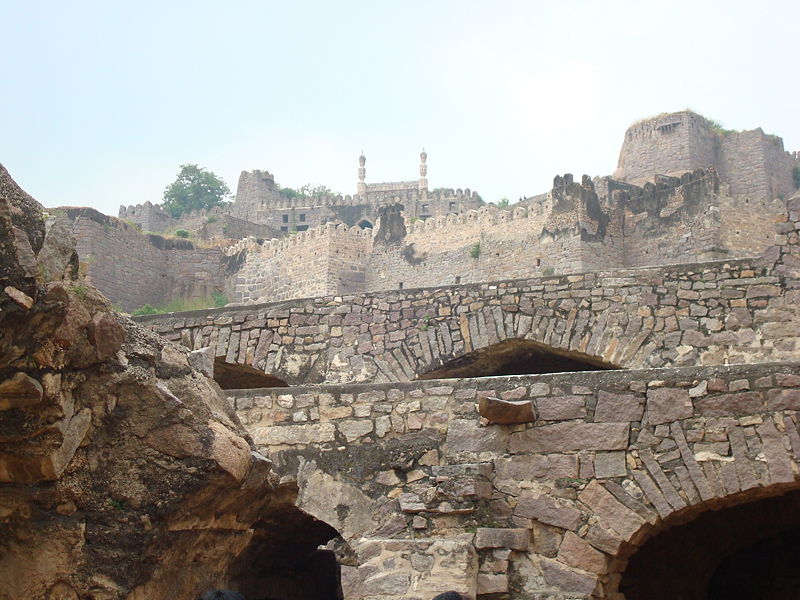
India, at that time, had the only known diamond mines in the world. Golconda was once renowned for the diamonds found in the southeast corner of the city and cut there in the city. The Mines of Golconda themselves yielded diamonds of trifling quantity. But Europeans were not allowed to know that. Europeans thought that diamonds were found only in the mines within the impenetrable fortress. Golconda was, in fact, the market city of the Indian diamond trade, and gems sold there came from a number of mines, most of which had little or not protection at all.
During the Renaissance and the early modern eras, the name "Golconda" acquired a legendary aura and became synonymous for vast wealth. The mines brought riches to the ruling Qutb Shahis of Hyderabad State, who ruled after the independence from the Mughals in 1724, until 1948, when Hyderabad was annexed, to become an Indian state.
By the 1880s, Golconda was being used generically by English speakers to refer to any particularly rich mine, and later to any source of great wealth.
Today, however, Golconda lies in ruin, merely a place where tourists visit to look in awe at the splenders of the past.
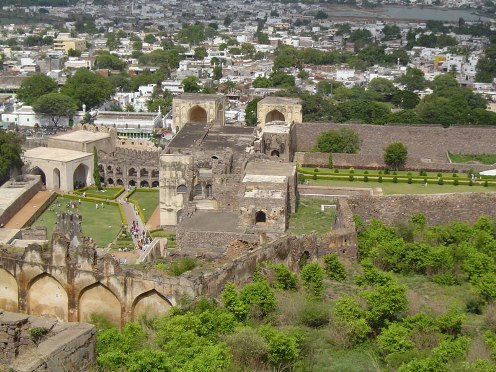
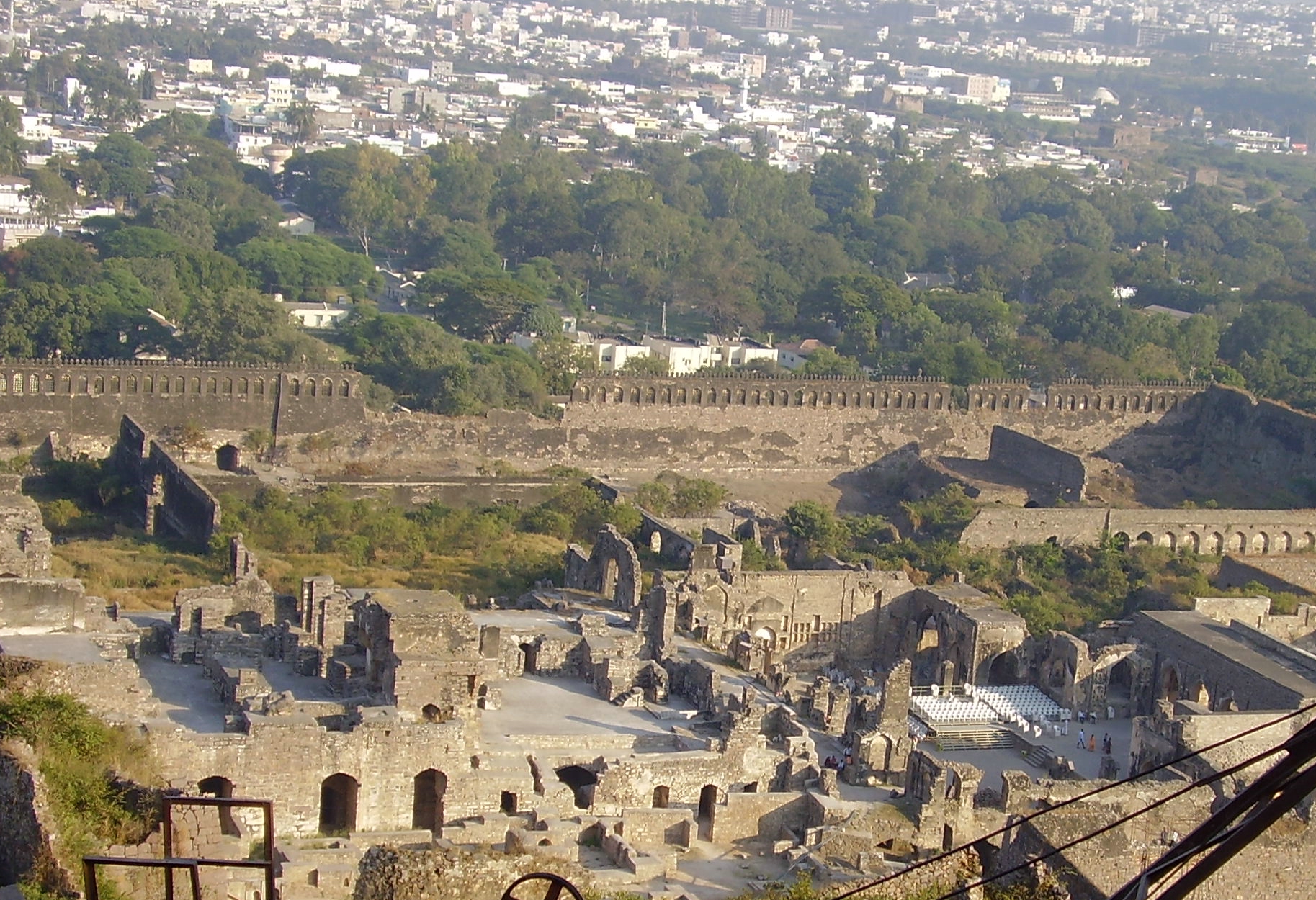
Right-click on the picture and select "View picture" to enlarge it.
FEEDBACK MAP
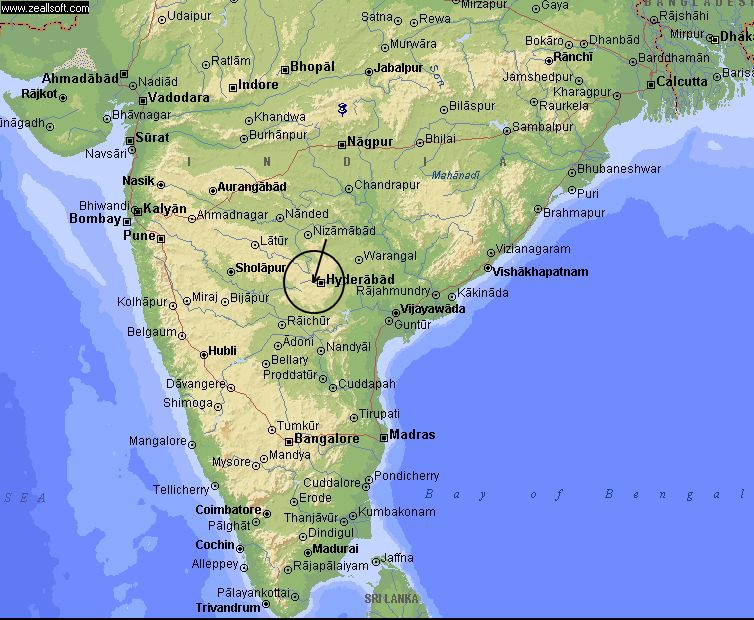
Many thanks to Wikipedia
and a personal account by Marlow Harris on
the "Unusual Life" web site
for the pictures and information for this target.